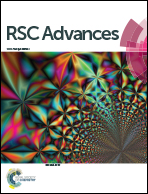Molecular and microstructural characterization of lecithin-based oleogels made with vegetable oil
Abstract
The molecular and microstructural organization of lecithin/canola oil oleogels as a function of water content, lecithin concentration and temperature were explored using rheology, polarized light microscopy, confocal microscopy and X-ray diffraction. Using a partial phase diagram, a large gel region consisting of 10–30 wt% of lecithin was formed. The range of wo values (molar ratio of [H2O]/[lecithin]) leading to gel formation at high lecithin concentration (30 wt%) was broader (wo = 0.28–2.78) than at low concentration (10 wt%) (wo = 1.25–1.67). Rheology results showed that the gels (wo = 1.40) transitioned to liquids at 50–55 °C regardless of lecithin concentration (10, 20 and 30 wt%). Small-angle X-ray diffraction at 25 °C revealed a reverse hexagonal (HII) lattice structure with a d-spacing of 52 Å and liquid crystallites ∼1200 Å in length that rearranged with temperature evolving towards a less-ordered isotropic fluid unable to gel. At the microscale, gels showed a 3D network composed of microfibres with an average diameter of ∼1 μm. The proposed self-assembly mechanism is based on the packing of reverse hexagonal tubules parallel to the axis of fibres. The gel network forms due to branching and overlapping of these bundles at junction zones along the reverse micellar chains. In conclusion, lecithin and water content underpinned the structure and morphology of these oleogels.


 Please wait while we load your content...
Please wait while we load your content...